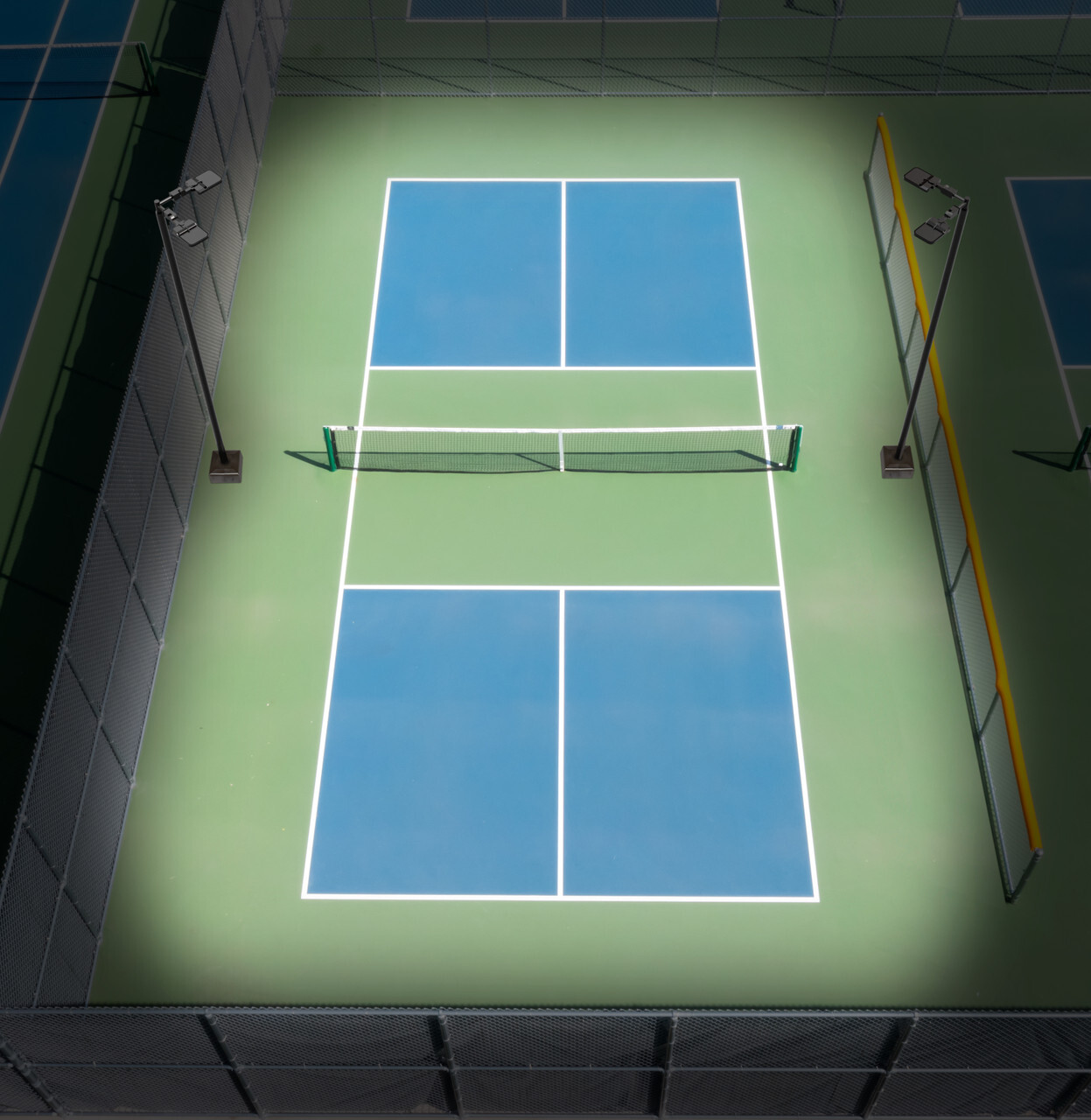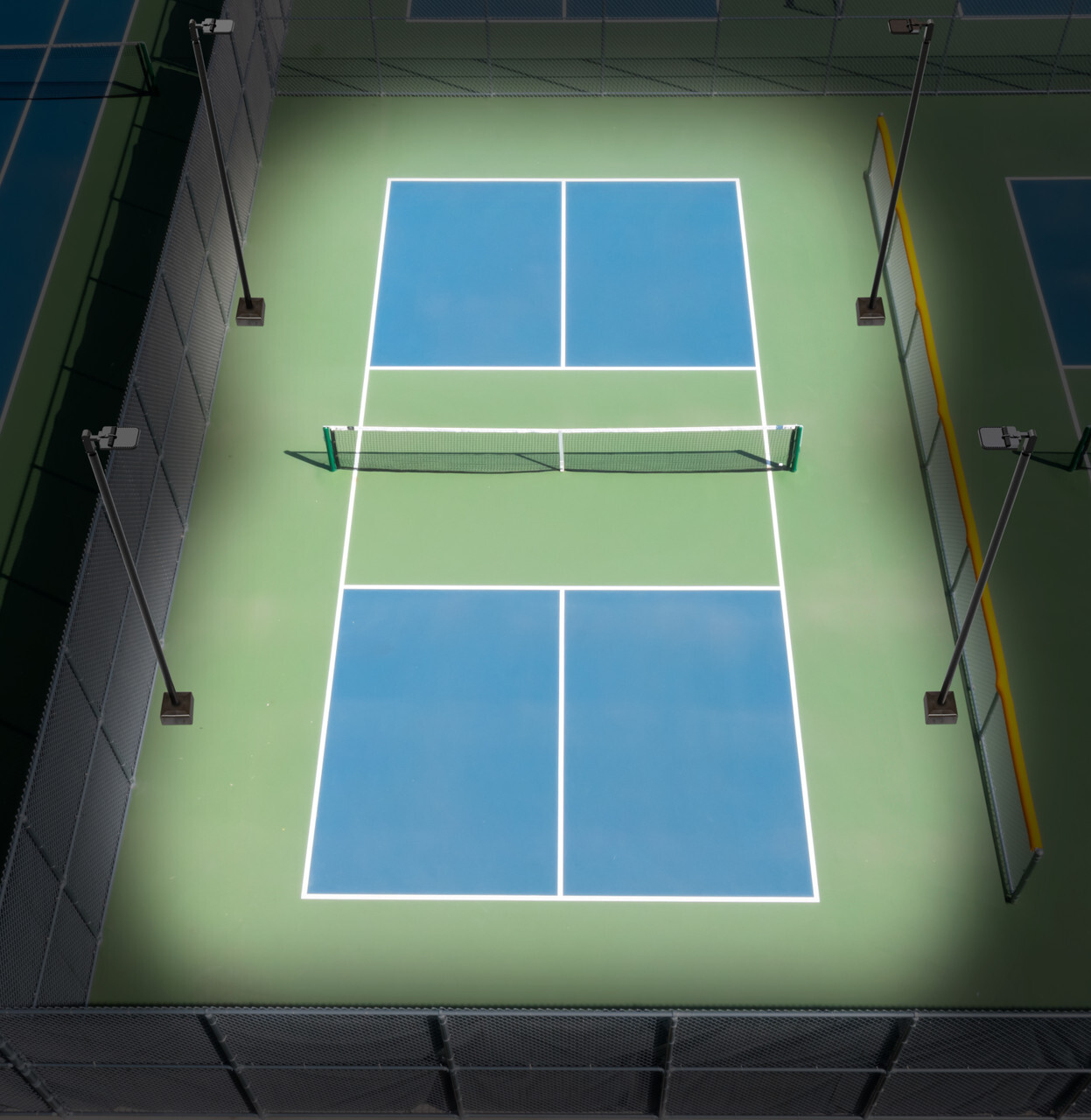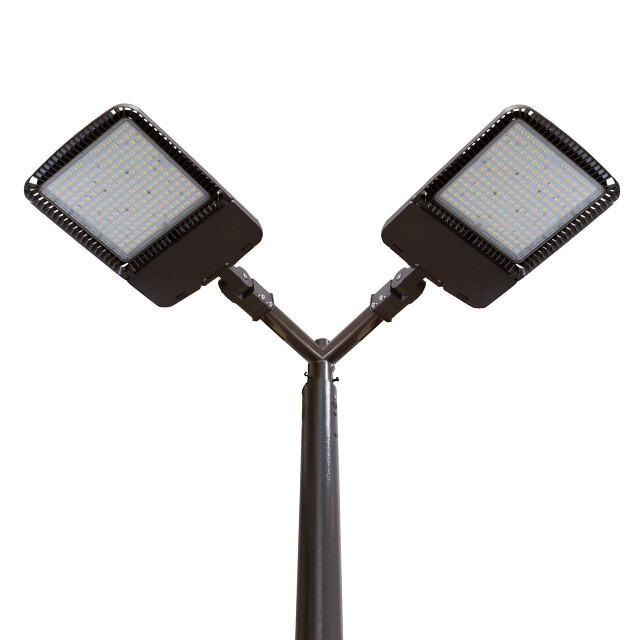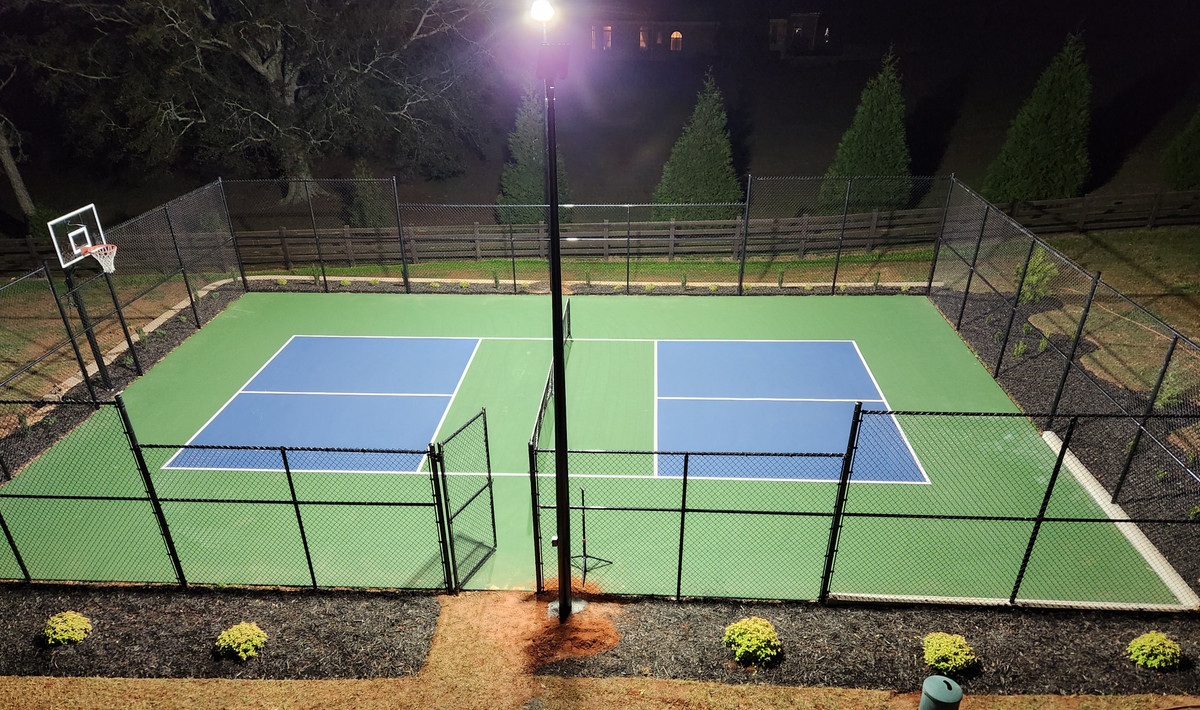Pickleball has become immensely popular in recent years. It was invented in 1965, and it’s estimated that 20 million people actively play it in the United States.
It’s easy to play and appeals to all age groups. As a result, there has been a surge in the construction of pickleball courts across the nation. Many of these courts are being constructed in or near residential areas. This brings additional considerations if you want to illuminate outdoor courts for nighttime use.
Excess light spillover from a pickleball court may become an issue for people living (or driving) nearby. It may also violate local codes or regulations.
This article will focus on mitigating light spill near pickleball courts in or around residential areas. This content will highlight best practices for residential-friendly sports lighting.

What is light spill, and why is it a concern near pickleball courts?
Light spill is unwanted light that spreads beyond its intended illumination area (in this case, the pickleball court). In residential zones, it can spread to other properties and contribute to light pollution.
How Can Poorly Designed Pickleball Court Lighting Disrupt Residential Areas?
Poorly designed pickleball court lighting will create side effects such as glare, light trespass, sleep disruption, and community pushback from improperly aimed or overpowered fixtures.
Specific types of light pollution include:
- Light Trespass: This occurs when artificial light spills into areas where it is neither needed nor wanted. Pickleball court lighting that shines through bedroom windows is an example.
- Glare: This occurs when intense, unshielded light causes visual discomfort or temporary blindness. Pedestrians and drivers are especially affected by glare, and it can significantly impact visibility and safety at night.
- Skyglow: This is the luminous glow that covers more populous urban and suburban areas. It is often visible from great distances. It is primarily the result of misdirected and excessive artificial lighting, obstructing the ability to see stars and other celestial bodies.
What lighting features help prevent light spill in residential zones?
Several features and strategies can help prevent light spill and light pollution near homes. They are:
Light Shields and Directional Optics
These features focus light beams onto the court and not outward or upward. They also reduce harmful glare.
They can be partial shields that stop light in specific directions or full shields that cover the entire fixture.
LED lighting is by far the best choice to prevent light spill. It is engineered to be directional, meaning it does not require reflectors or other optical features. It is available in several output distribution patterns. In other words, its light output is focused on where it needs to go and not wasted anywhere else.
Light Pole Placement
Two or four poles are needed to mount the light fixtures for the court. Four poles are recommended for higher skill levels of play. In either case, the poles should be placed at the sides of the court. Two-pole configurations should be placed on either side of the net.

Four-pole configurations have two poles placed on each side, each at the middle of the half court.

Mounting Height
Fixtures should be pole-mounted in the 15- to 25-foot range. Higher pole-mount heights can lead to light spill issues.
Are there lighting regulations for residential adjacent pickleball courts?
Pickleball courts have some general lighting requirements that help to ensure that they produce uniform lighting and are glare-free. However, outdoor courts near residential areas will likely have additional requirements.
Before installing a pickleball court lighting system in residential adjacent areas, it’s best to consult the local municipality where the system is being installed to determine local codes and ordinances associated with outdoor lighting. Outdoor lighting must comply with local regulations. These regulations will always trump general standards.
Many local municipalities adopt DarkSky International guidelines when determining their outdoor lighting codes or regulations. DarkSky International is a non-profit organization that promotes responsible lighting practices aimed at reducing or eliminating light pollution in communities, thereby protecting wildlife, human health, and increasing energy efficiency. The goal is to minimize the effect of artificial light on the surrounding environment.
Dark sky lighting is designed to preserve our view of the night sky and minimize light pollution. These fixtures focus on downlighting, reducing sky glow, and reducing glare. They prevent unnecessary light trespass beyond where it is needed.
For residential installations, opt for warmer color temperatures (CCT) in the range of 3000K-4000K. Higher CCTs, such as 5000K, are best suited for commercial or municipal installations and a higher skill level of play. Lights with a cool/blue 5000K CCT would not be recommended in or around residential areas. Dark sky compliant lighting will have a maximum color temperature of 3000K to minimize light pollution.
You’ll also want to comply with local ordinances for the required pole height, fixture types, and wind resistance. Municipalities often regulate:
- Maximum pole heights (usually 20-25 feet). A 20-foot pole height would be ideal, but it can be made to work with a 15-foot height using LED lights.
- Fixture types allowed near homes or wetlands. These regulations aim to prevent light spill and protect nearby wildlife.
- Wind load ratings for pole stability. Local building ordinances require that pickleball court light poles safely withstand high wind speeds and other meteorological events, especially in high-wind areas along the coast or in mountainous areas. This requires that pole-mounted sports lighting has met EPA requirements. These requirements will depend on the geographical location where the poles are installed.
Why is the two-pole four LED light fixture system ideal for residential pickleball courts?
LightMart offers all-in-one Pickleball Light Systems that include the light poles, light fixtures, and mounting hardware.
Our two-pole/four LED light fixture configuration is the perfect solution for balanced performance and minimal light disruption in residential areas. Its energy-efficient LED light fixtures utilize sports optics, providing focused, low-glare lighting.
Additionally, the light fixtures included with these systems have selectable wattage and color temperature settings. This allows you to fine-tune the fixtures to your lighting preferences or requirements.

Conclusion
LightMart can help with outdoor pickleball lighting solutions. Our friendly and knowledgeable staff can provide you with IDA-compliant light fixtures, custom lighting plans, and expert recommendations.
David DeWald is the E-Commerce Marketing Specialist at LightMart. He has been working in the industrial and commercial lighting industry since 2013 and is based in the greater Chicago area. David specializes in digital product management, web content writing, and product marketing. He regularly publishes lighting industry-related articles on the LightMart blog. You can visit his LinkedIn profile here.
